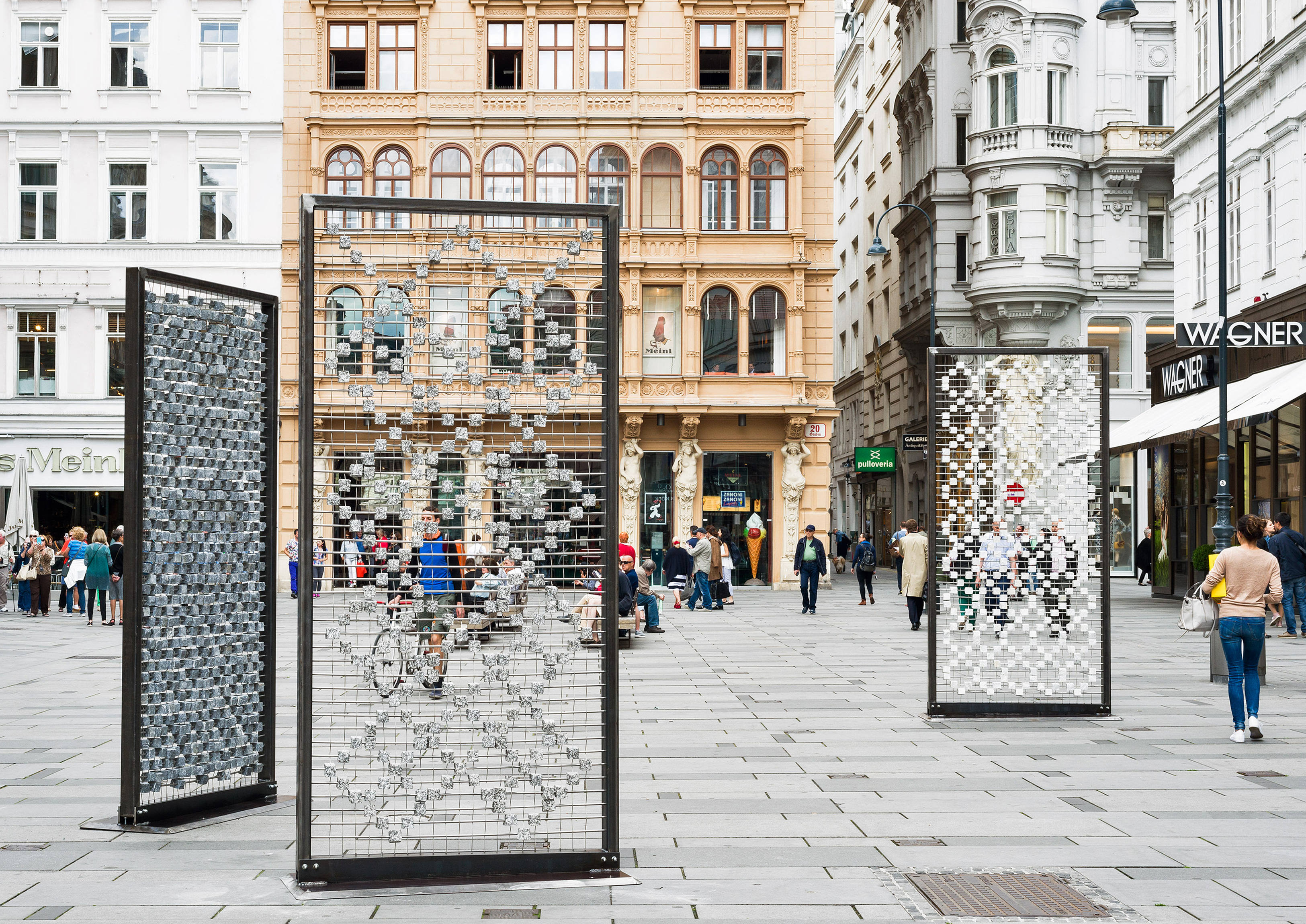Materializing Migration: Weaving the Mashrabiya in Nevin Aladağ’s Screens I–III (2016)
Abstract
Textiles and communication have a longstanding relationship, with many cultures using textiles as a vehicle for transmitting information.1 In this article, I present my analysis of Nevin Aladağ’s woven public sculpture, Screens I–III. This research forms part of my PhD project, “Materialising Migration: Transcultural Textiles in Germany.” My research seeks to examine how artists use textile processes to develop understanding of cultural transfer between the Middle East and Germany. Screens I–III consists of three freestanding stainless steel screens with repeat patterns created using granite and marble blocks (cobblestones). The piece was commissioned in 2016 by the public sculpture initiative KÖR (Kunst im öffentlichen Raum Wien) and was displayed in the pedestrian zone of Graben, Austria. Aladağ’s artistic practice is concerned with the notion of literal and metaphorical boundaries in this article. I examine Aladağ’s use of weaving to construct Screens I–III and the cultural differences between her Turkish and German identities. I argue that she subverts weaving to renegotiate polarizing views of different cultures, while challenging traditional perceptions of textiles.

Article in TEXTILE (The Journal of Cloth and Culture) by Lydia Wooldridge, published online 20 August 2019.